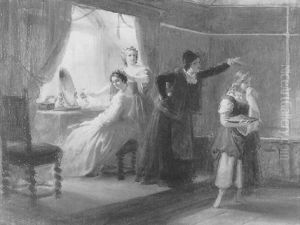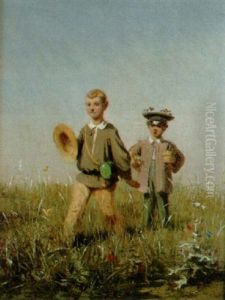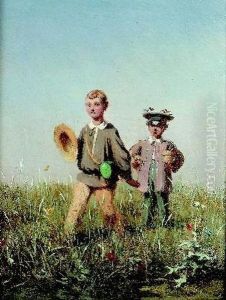Albert Hendschel Paintings
Albert Hendschel was a German artist, illustrator, and cartoonist, born on October 14, 1834, in Frankfurt am Main. He grew up in a culturally rich environment and was encouraged to pursue his artistic talents from a young age. Hendschel showed an early interest in the arts and was particularly drawn to graphic works and illustrations.
In his early career, Hendschel worked as an illustrator, contributing to various periodicals and publications. He developed a distinct style characterized by sharp wit and a critical eye, which soon led him to become a well-known figure in the field of caricature and satire. Hendschel's work often commented on the social and political issues of his time, and he used his art as a means to express his perspectives on the rapidly changing society of the 19th century.
Throughout his career, Hendschel contributed to the ‘Fliegende Blätter’, a popular German satirical weekly, and the ‘Münchener Bilderbogen’, a series of illustrated sheets with humorous content. His contributions to these publications helped shape the visual language of satire during the period and influenced subsequent generations of artists and illustrators.
Albert Hendschel's legacy extends beyond his printed works. He was also involved in the production of panoramas, which were large-scale paintings that provided immersive, 360-degree views of historical events or exotic locations. These impressive works were displayed in special rotundas and were popular attractions in the 19th century.
Despite his success, Albert Hendschel's life was relatively short. He died on July 27, 1883, in Frankfurt am Main, leaving behind a body of work that continues to be studied and appreciated for its historical significance and artistic merit. Hendschel's contributions to the field of illustration and caricature are remembered for their incisive humor and technical skill, and his works remain a valuable part of German art history.


